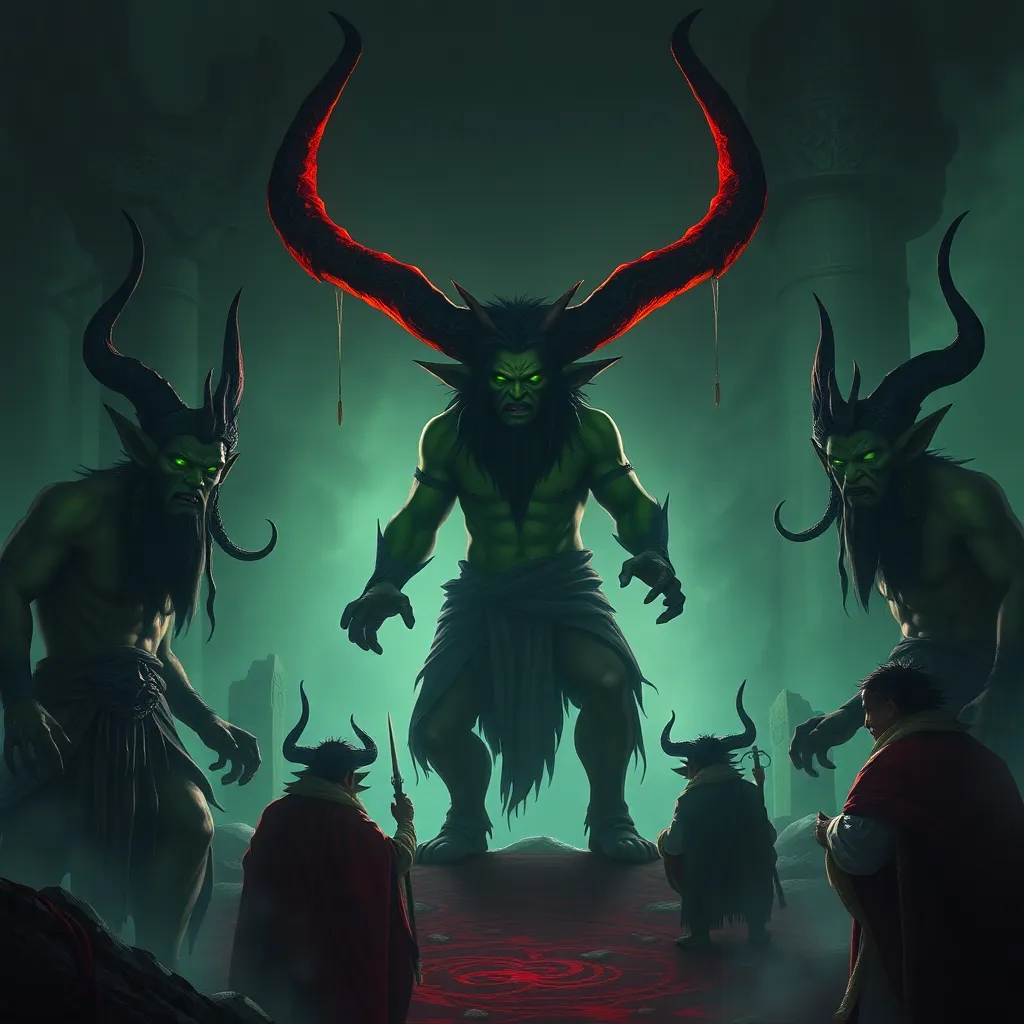The Phoenix in Mythology: A Symbol of Rebirth and Renewal
The phoenix, a mythical bird known for its ability to rise from the ashes, is a timeless symbol of rebirth, renewal, and immortality. Across cultures, the phoenix has held a powerful place in mythology and folklore, its story captivating imaginations for centuries. In ancient Egypt, the Bennu bird, with its association with the sun god Ra, embodies the cycle of life and death, aligning with the phoenix’s ability to regenerate.
The most famous account of the phoenix comes from Greek mythology. The phoenix, a bird of immense size and beauty, is said to live for hundreds of years. When its time comes to an end, the phoenix builds a nest of fragrant wood and sets itself aflame. From the ashes, a new phoenix emerges, ready to begin its life anew. This cycle of death and rebirth continues eternally, making the phoenix a powerful symbol of hope and regeneration.
The myth of the phoenix is not only a fascinating story, but also a powerful metaphor for life’s cyclical nature. Just as the phoenix rises from the ashes, individuals and societies can overcome challenges and emerge renewed and stronger. The phoenix reminds us that even in the face of adversity, there is always hope for a brighter future.
The Phoenix in Classical Music: From Ancient Greek Mythology to Orchestral Scores
The phoenix’s enduring appeal has transcended the realm of mythology and found its way into the world of classical music. Composers throughout history have been inspired by the phoenix’s story, weaving its themes of rebirth, renewal, and transformation into their orchestral scores.
One of the earliest examples of the phoenix in classical music is found in the works of **Claude Debussy**, who was intrigued by the phoenix’s symbolism and its connection to ancient myth. His orchestral pieces, like **”La Mer”**, often evoke a sense of wonder and mystery, drawing parallels to the phoenix’s ethereal qualities.
Later, **Igor Stravinsky**, known for his innovative and challenging compositions, used the phoenix as a source of inspiration in his ballet **”The Firebird”**. The ballet, with its fiery themes, soaring melodies, and dramatic narrative, tells the story of a magical bird who helps a prince escape from a wicked sorcerer. The phoenix’s role as a protector and liberator resonates deeply with the themes of rebirth and renewal found in the myth.
The Phoenix in Romantic Era Music: A Symbol of Passion, Tragedy, and Triumph
The phoenix’s themes of resurrection and renewal perfectly aligned with the Romantic era’s fascination with emotionality, individualism, and the triumphs of the human spirit. Composers of the Romantic era, such as **Hector Berlioz**, **Richard Wagner**, and **Gustav Mahler**, used the phoenix as a symbol of both passionate love and tragic loss, mirroring the phoenix’s cyclical journey of life and death.
**Hector Berlioz’s** **”Symphonie Fantastique”**, a monumental work that explores the depths of human emotions, uses the phoenix as a metaphor for the protagonist’s journey through love, despair, and ultimate redemption. **Richard Wagner’s** epic operas, such as **”The Ring Cycle”**, showcase the phoenix’s transformative power in narratives filled with drama, betrayal, and ultimate redemption. Lastly, **Gustav Mahler’s symphonies**, especially his **”Symphony No. 2, ‘Resurrection'”**, use the phoenix as a symbol of hope and renewal, culminating in a powerful and moving celebration of life and resurrection.
The Phoenix in 20th Century Classical Music: Modern Interpretations of an Ancient Myth
The phoenix continues to inspire composers in the 20th century, as they explore new musical languages and interpretations of the phoenix myth. Composers like **Benjamin Britten**, **Leonard Bernstein**, and **Dmitri Shostakovich**, each brought their unique perspectives to the phoenix’s story, capturing its themes of rebirth and resilience in their compositions.
**Benjamin Britten’s** **”Peter Grimes”**, an opera dealing with the ostracized individual and the themes of justice and redemption, uses the phoenix as a symbol of hope and resilience amidst societal pressure and conflict. **Leonard Bernstein’s** **”West Side Story”**, a modern retelling of Romeo and Juliet, employs the phoenix as a symbol of love, forgiveness, and the potential for renewal even in the face of adversity. **Dmitri Shostakovich**, known for his symphonies that reflect the horrors of war and political oppression, uses the phoenix as a symbol of hope and the indomitable spirit of humanity.
The Phoenix in Rock Music: A Symbol of Rebellion and Resurgence
The phoenix’s powerful symbolism of rebirth and renewal resonated with the rock music movement, a genre that emerged in the 1950s and 1960s as a counterculture movement, challenging societal norms and embracing passionate expression. Rock music, with its raw energy, rebellion, and emphasis on individual expression, embraced the phoenix as a symbol of resistance and resurgence.
From the early days of rock and roll, artists like **Little Richard**, **Chuck Berry**, and **Elvis Presley**, used the phoenix as a metaphor for breaking free from societal constraints and embracing a new, unconventional way of life. With their energetic performances and rebellious lyrics, these artists empowered young audiences to embrace individuality and challenge the status quo.
The phoenix’s story of rising from the ashes also resonated with rock bands who faced challenges and setbacks in their careers. Bands like **The Beatles** and **The Rolling Stones** emerged from the ashes of their early struggles to become global icons, demonstrating the phoenix’s power of resilience and enduring success.
The Phoenix in Rock Anthems: From the Birth of Rock to Modern Day
The phoenix’s tale of resurrection resonated deeply with the rock anthem, a genre that often celebrates overcoming adversity and finding strength in the face of hardship. From the early days of rock and roll, artists like **Led Zeppelin**, **Queen**, and **AC/DC** used the phoenix as a symbol of resilience, infusing their anthems with powerful messages of hope and determination. These anthems, played in loud, energetic concerts, transformed stadiums into spaces of collective energy, with the phoenix representing a shared spirit of rebellion and resurgence.
The phoenix’s enduring presence in rock anthems can be seen in the works of artists like **Pink Floyd** and **Nirvana** who utilized the phoenix symbol to explore themes of self-discovery, societal alienation, and the struggle for identity. These artists faced personal and societal challenges and expressed those experiences through music, often using the phoenix as a metaphor for pushing boundaries and finding strength in the face of hardship.
The phoenix continues to be a powerful symbol in rock anthems today, with artists like **Foo Fighters**, **Muse**, and **Green Day** using it to convey themes of perseverance, personal transformation, and the indomitable spirit of rock music. Modern rock anthems, fueled by the phoenix’s symbolism, continue to inspire and uplift audiences by promoting messages of resilience, self-belief, and the power of music to bridge divides and unite people.
The Phoenix as a Metaphor for Personal Transformation in Music
The phoenix is not only a powerful symbol in mythology and music, but also serves as a potent metaphor for personal transformation. This metaphor resonates with audiences at a deeply personal level, reminding them that even in the face of challenges, there is always the potential for growth and renewal.
Throughout history, composers and musicians have used the phoenix as a metaphor for personal journeys of self-discovery, growth, and transformation. Classical composers like **Beethoven**, whose later works reflect his struggles with deafness, and **Schubert** who faced illness throughout his life, incorporated the phoenix’s themes of resilience and overcoming adversity into their music.
The phoenix’s symbolism is also powerfully portrayed in modern music. Musicians like **Lady Gaga** and **Beyoncé** have used their music to explore themes of personal transformation, embracing vulnerability, challenging societal expectations, and ultimately emerging as new, stronger versions of themselves. These artists, often facing personal struggles, used their music to connect with audiences on an emotional level, effectively utilizing the phoenix as a metaphor for resilience and self-discovery.
The phoenix’s journey from ashes to rebirth mirrors the transformative journey of individuals who overcome life’s challenges and emerge stronger and more resilient. Whether it’s overcoming personal struggles, facing societal pressures, or simply evolving as individuals, the phoenix’s story resonates with audiences at a personal level, reminding them that change is inevitable and growth is possible.
The Phoenix as a Symbol of Hope and Resilience in Music
The phoenix’s ability to rise from the ashes is a powerful symbol of hope and resilience, attributes that are often reflected in music that inspires, consoles, and empowers listeners. Throughout history, music has played a vital role in offering solace and hope in times of hardship, and the phoenix symbol is often used to represent this.
Classical composers like **Johann Sebastian Bach** and **Wolfgang Amadeus Mozart**, whose works were often deeply rooted in spirituality and faith, incorporated the phoenix’s themes of renewal and resurrection into their music, evoking a sense of hope and spiritual transcendence.
Similarly, **George Gershwin**, a composer known for his innovative and uplifting jazz compositions, often used the phoenix as a symbol of hope and resilience, especially in his work **”Rhapsody in Blue”**, which celebrates the triumphs of the human spirit in the face of challenges.
The phoenix’s powerful symbolism has also resonated deeply with composers of modern music. **John Lennon**’s iconic song **”Imagine”**, with its message of peace and unity, uses the phoenix as a symbol of hope for a better world, inspiring listeners to strive for a more peaceful and harmonious future.
Music, through its power to evoke emotions and connect people, often utilizes the phoenix as a symbol of hope and resilience, reminding listeners that even in the darkest of times, there is always the possibility of renewal, rebirth, and a brighter future.
The Phoenix in Music: A Timeless Symbol of Renewal
The phoenix’s enduring appeal and its powerful symbolism of renewal has transcended the boundaries of time and genre, enabling it to resonate with musicians across diverse musical traditions. From the grand orchestral scores of classical music to the gritty anthems of rock and roll, the phoenix continues to inspire musicians and audiences alike.
The phoenix’s symbolism of rebirth and renewal resonates across musical genres, serving as a universal symbol that transcends cultural and historical boundaries. The phoenix story offers a timeless message of hope, resilience, and the cyclical nature of life – a message that speaks to the human experience in its entirety.
The phoenix, through its embodiment of overcoming adversity, empowers listeners to face challenges with strength and optimism. The phoenix reminds us that even in the face of hardship, hope persists, and the potential for renewal and rebirth is always present. The phoenix’s story inspires us to embrace change, to learn from our experiences, and to emerge stronger and more resilient from every challenge we face.
The Phoenix in Music: An Enduring Symbol of Life, Death, and Rebirth
The phoenix’s story is not only a compelling myth but also a powerful metaphor for the cyclical nature of life. The phoenix’s journey through death and rebirth highlights the interconnectedness of life, death, and renewal, a theme that resonates deeply with the human experience. Music, with its ability to evoke emotions and connect with audiences on a profound level, has long utilized the phoenix as a symbol for these universal concepts.
From the ancient hymns of the Greek world to the modern anthems of rock and roll, the phoenix’s story has been woven into the fabric of music. Classical composers like **Giuseppe Verdi**, whose operas often explore themes of love, loss, and redemption, used the phoenix as a symbol for the cycle of life and death, often portraying the phoenix’s journey as a metaphor for human relationships and the inevitability of loss and the potential for renewal.
Modern musicians like **David Bowie**, whose music often explored themes of transformation, identity, and acceptance, used the phoenix as a symbol for the ongoing process of evolving and reinventing oneself, embracing change as an essential part of life’s journey.
The phoenix’s journey from destruction to rebirth reflects the natural rhythm of life, from birth to death and back again. Music, with its ability to touch the human soul and connect with the deepest emotions, continues to use the phoenix as a powerful symbol for the cycle of life, death, and rebirth, reminding us that these are interconnected and essential parts of the human experience.
FAQ
**Q: Why is the phoenix so popular in music?**
**A:** The phoenix is a powerful symbol of rebirth, renewal, and resilience, themes that resonate deeply with musicians and audiences across genres.
**Q: What are some examples of the phoenix in classical music?**
**A:** Composers like Debussy, Stravinsky, Berlioz, Wagner, and Mahler have incorporated the phoenix’s symbolism into their works.
**Q: What are some examples of the phoenix in rock music?**
**A:** Artists like Led Zeppelin, Queen, AC/DC, Pink Floyd, Nirvana, Foo Fighters, Muse, and Green Day have used the phoenix as a symbol of rebellion, resurgence, and personal transformation.
**Q: What is the significance of the phoenix as a metaphor for personal transformation?**
**A:** The phoenix’s journey from ashes to rebirth mirrors the transformative journey of individuals who overcome life’s challenges and emerge stronger and more resilient.
**Q: What is the significance of the phoenix as a symbol of hope and resilience?**
**A:** The phoenix’s ability to rise from the ashes is a powerful symbol of hope and resilience, reminding listeners that even in the darkest of times, there is always the possibility of renewal and a brighter future.
**Q: What is the significance of the phoenix as a symbol of life, death, and rebirth?**
**A:** The phoenix’s journey through death and rebirth is a powerful metaphor for the cyclical nature of life, highlighting the interconnectedness of life, death, and renewal.



